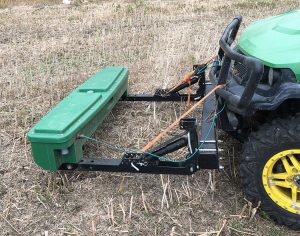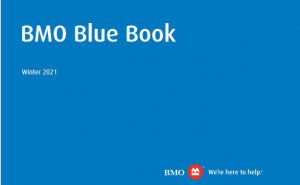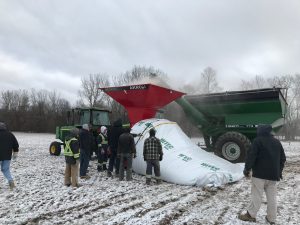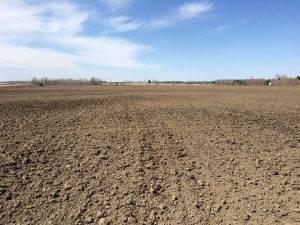Plant growth regulators
MODIFYING THE CROP
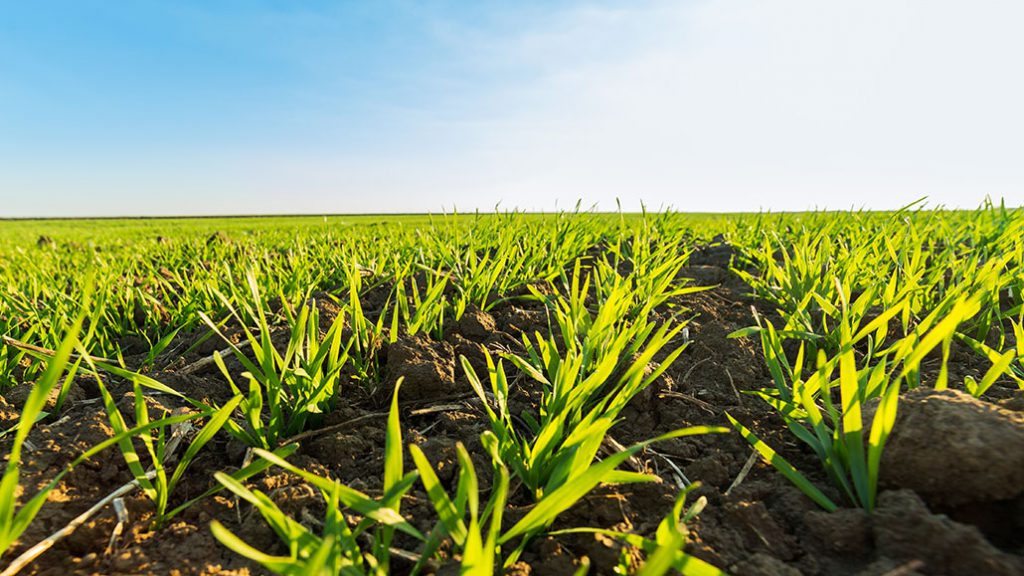
PLANT GROWTH REGULATORS (PGRs) have been used commercially in agricultural production dating back to the 1930s and 1940s. However, if one goes back even further, it is found that modifying plant growth by applying something to the plant has been done for centuries.
For example, in the Middle East centuries ago, olive oil was placed on a fig just as it was beginning to ripen. By placing the oil on the fig, it helped contain a very small amount of ethylene gas that the fig produced, allowing the fig to ripen very quickly.
Just to be clear, the ethylene gas is what helps the plant mature, not the olive oil; but by containing the gas, the farmers were able to encourage the plant to mature faster than normal.
PGRs are used in agriculture to modify a crop by changing the response to various factors that control plant development. Changing vegetative growth and reproductive growth and maturity are some of the common uses for PGRs in modern agriculture today.
CURRENT USE
Currently, there are a few PGRs available for use in Ontario. Many of them work by shortening the stems of the cereal plant and increasing the stem thickness. By doing so, it helps reduce lodging later in the season. This allows for increased management of the cereal plant and can help make harvest a little easier by not having such high straw volumes. There is one PGR that works slightly different than the others by encouraging early season root and shoot development to lessen the impact of later stresses on the plant.
Ethrel is a PGR that has been on the market for several years. “Ethrel is a great tool for growers who are intensively managing their wheat crop, helping to increase grain yield, and reduce harvest time by reducing lodging,” says Mark Alberts, cereals marketing manager with Bayer CropScience Canada. “Ethrel does this by reducing crop height and strengthening the straw. Ethrel can be a useful management tool for fields with high fertility or manure.”
Proper timing of application is crucial, reference the label for accurate timing.
Manipulator (PGR) is a “management tool that limits the height and strengthens cereal crop stems and allows growers to push for higher yields and improve crop management with reduced risk of lodging. Therefore, potentially increasing profit so farmers can grow more acres of winter wheat in Ontario,” says Bill Norman, technical sales rep with Belchim Crop Protection Canada. By limiting the height of the cereal crop, it can potentially reduce the risk of lodging, improving harvest speed and efficiency.
The newest product to market is Moddus. “We know that lodging means major headaches and reduced income,” says Eric Phillips, fungicides and insecticides product lead with Syngenta Canada. “With Moddus, we are providing a solution that improves harvestability, lets growers push for higher yields and ultimately, get more in the bin.”
Moddus will be available for the 2021 growing season.
Proliant is unique in that it can be applied across multiple crops and tank mixed with various herbicides, fungicides, and nutrients. “Along with substantial yield and quality increases there has been a demonstrated reduction in green snap and root lodging in corn,” says Adam Bent, territory manager for Central and Eastern Ontario with Nufarm Agriculture.
Larger roots and a stronger stalk allow for a plant that handles stress more effectively.
PGRs can be useful tools. It is important to realize that some conditions make them more applicable in some years than others. PGRs can be a great addition to your program when you have all other management factors addressed. Do some on-farm trials of your own, making sure that all your treatments are balanced to provide the most accurate results. And, realize that some of the PGRs listed can be tank mixed with other products while some cannot. As always, be sure to read the label prior to using.
Joanna Follings, cereals specialist with the Ontario Ministry of Agriculture, Food and Rural Affairs, and Dr. David Hooker, University of Guelph Ridgetown Campus, have been doing some on-farm trials this past year, at two locations in Ontario. The trials will continue in 2021 and 2022 looking at PGRs on winter wheat and oats.
www.fieldcropnews.com will have updates on their progress. There are also a number of farmers and retailers completing side by side trials on any number of the above PGRs, which provide local, on-farm data.
Laura Ferrier is an agronomist with Grain Farmers of Ontario. •
AVAILABLE FOR MARKET IN ONTARIO
Ethrel (Active Ingredient Ethephon) reduces cell elongation and plant height and is used to reduce lodging in spring and winter wheat. Application window for wheat Zadoks growth stage (Z) 37-45.
Manipulator PGR (Chlormequat chloride) reduces cell elongation and plant height and helps the prevention of lodging in cereals. Note that some barley purchasers may restrict against the use of Manipulator. Application window for wheat Z 12-39, oats and barley Z 14-39.
Moddus (Trinexapac-ethyl) redirects the plant’s production of gibberellic acid, a hormone responsible for growth, to reduce cell elongation. This results in plants with shorter, thicker stems and improved overall standability barley, oats, and wheat. Application window for cereals Z 30-39.
Proliant PGR (Gibberellic acid, GA3) encourages cell division, enhancing early growth of roots and shoots to promote high yields in corn, soybeans, and cereals. Application window for corn V3-V6. soybeans V1-R3, cereals Z 13-29.
For specific crop usage information ALWAYS reference and follow the label. Paying close attention to the application window for these products, as some of the timings, especially the ideal timing, are quite short. Also pay special attention to compatible tank mixes.









